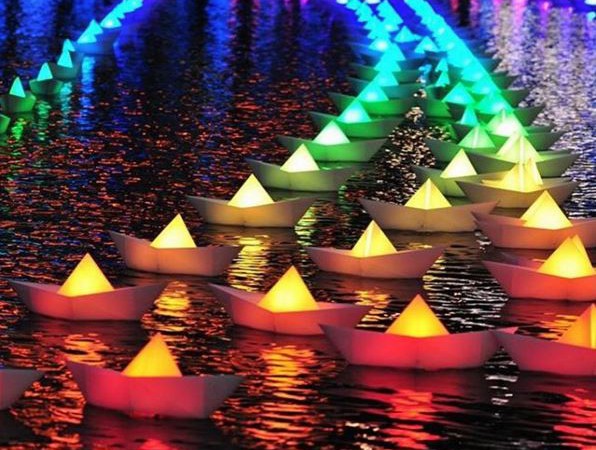Login |
Register |
Management | Member Center | Contact Us





 CN
TW
EN
CN
TW
EN
Login |
Register |
Management | Member Center | Contact Us





 CN
TW
EN
CN
TW
EN
|
|
|
In this blog entry by Patricia Harris, CEO of Bloomberg Philanthropies, she takes a look at the Public Art Challenge that Baltimore, the capital of Maryland in U.S. has taken on.
Cities are the global centers of communication, commerce, and culture – and where we also look for solutions to our greatest societal challenges. That’s why Bloomberg Philanthropies focuses on cities across each of our five programmatic areas, supporting innovative approaches to tackling tough issues.
 |
| LED paper boat installation VOYAGE by Aether & Hemera from Newcastle, UK, will be featured at Baltimore City Light this year. (Photo courtesy of Bloomberg Philanthropies) |
Time and again we have seen how art and cultural events can reinvigorate a city and cast urban challenges in a new light. The ability of public art to strengthen community bonds and drive economic growth is a major reason why Bloomberg Philanthropies continues to invest in it.
Building on our belief in the transformative power of public art, Bloomberg Philanthropies launched the Public Art Challenge last year. The initiative funds temporary public art projects that celebrate creativity, enhance urban identity and encourage public-private partnerships that bring new investments to neighborhoods. We look forward to the upcoming events in the winning cities: Gary, IN; Los Angeles, CA; and Spartanburg, SC; as well as collaborating cities Albany, Schenectady and Troy, NY.
We are also thrilled to see so many other cities who applied for this award continue to move forward with exciting projects, including Baltimore.
Light City Baltimore plans to be the first large-scale international light and ideas festival in the United States. The event is designed to illuminate Baltimore’s abundance of cutting-edge talent while fostering discussion and collaboration among artists, city planners, tech and startup innovators, philanthropists and those in the culture profession. Light City is a great example of how communities are using public art to showcase creativity and provide new avenues for thinking about urban planning and policy.
As cities such as Baltimore explore economic growth and community development strategies, public art can play an important role, by engaging local artists, spurring tourism, and contributing to the revitalization of neighborhoods. We hope that Light City’s run in Baltimore (March 28 – April 3) will add to the growing national dialogue about the value of public art in helping cities envision solutions to some of our nation’s most pressing issues.